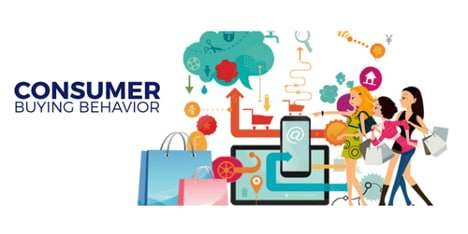
Analysis of consumer behavior is not a novel idea. Before the widespread availability of online data, marketers had to extrapolate consumer preferences by observing their actions in stores. Customers were polled, but it took a lot of time, hard work, and money. Still, thanks to data analytics, some companies can anticipate their customers’ next moves based on their prior purchases, search terms, and even social network profiles.
A person may buy pet supplies after an online search for “fish tanks” or “bird feeders,” for instance. There is absolutely no limit to the amount of available data that can be examined. Companies are taking advantage of this to learn more about customer habits and develop more precise behavioral analytic marketing strategies.
Data Mining For Understanding Consumer Behavior
Marketers can now have a deeper insight into their clients’ habits thanks to the widespread adoption of digital analytics. In particular, analytics of consumer behavior can help marketers understand the customer journey and make ads and promotions that are more relevant to each person.
Successful behavioral analysis marketing relies on understanding and satisfying consumers’ needs and wants. Analytics geared toward customer activity are now employed in making such forecasts. One of the most prevalent varieties of behavioral analytics is focused on customers. You can learn how people use your products and services by doing this. You can organize the information you collect from customer analytics by topic, such as the actions their customers take.
A deeper understanding of consumer habits is now within reach, thanks to the increasing sophistication of digital analytics tools. As a result, marketing strategies can be better formulated with this data in hand.
Any business would benefit from having employees capable of predicting customer behavior. Some businesses can leverage in-house data analytics tools to offer predictive insights, but others may not.
Learn How Consumers Think and Act

Access to a Customer Behavior Analytics Platform that can display insights into how customers engage with your organization allows you to predict their behavior. A customer relationship management (CRM) or marketing suite isn’t complete without this platform, as it delivers the data and tools necessary to tell a customer’s narrative.
Analytics systems for customer behavior can be found in various implementations, from desktop apps to SaaS to integrated marketing suites. That’s why it’s crucial to make an informed decision about the platform that best serves your company’s needs. Getting a customer behavior analytics platform that works within your budget and meets your specific objectives is better.
Customer Tracking in the Digital Era
- Consumers’ whereabouts can be monitored through digital monitoring methods like GPS.
- Geofencing is the process of creating an electronic fence around a geographical area.
- In the media context, geotagging refers to including location data alongside other metadata such as title and description.
- Digital marketing analytics can serve several functions for e-commerce marketers:
- Digitally observing consumer behavior can help e-commerce marketing because it shows which products are popular and which ones should be changed or taken off the market.
- Consumer digital activity tracking can also reveal which digital channels consumers use to examine merchandise.
- Finally, digitally tracking consumer behavior is a technique to learn about customers’ tastes and preferences and the channels they like to use to communicate with the business.
Market Segmentation Based on Purchase Behavior
Behavioral segmentation is an efficient and successful method of using your consumer behavior analytics platform to foresee your customers’ actions. Targeting specific subsets of consumers with specific marketing efforts, such as repeat buyers or shoppers, is feasible. As another application, consumer segmentation allows for the development of specialized, targeted promotions. For example, suppose you know that a segment of clients is interested in traveling. In that case, you may provide unique discounts and promotions for those folks.
Using Data Science to Examine Purchase Habits
Success in retail requires an understanding of how to anticipate customer needs. A consumer behavior analytics platform allows merchants to forecast it better and understand their customers and their behavior. This is fundamental to understanding what customers really want and is vital to producing and releasing successful products.
There Are Essentially Three Different Kinds of Customer Behavior
- What a customer is willing to buy is “purchase behavior.”
- Overall interest in a good, service, or brand is called “demand.”
- Retention refers to the length of time a customer sticks with a particular brand.
- Recall is a measure of how well buyers can remember certain parts of their buying experiences.
- How a thing is used, or its usage behavior.
- Attrition is what happens when people stop using a product or brand because they are unhappy, don’t think it’s worth it, or for other reasons.
- Indicator of how committed consumers are to a single brand over time.
- A customer’s reaction after making a purchase
- An individual’s actions before making a purchase
What Kind of Behavior Is Demonstrated by Customers?
Sale prices increase a product’s likelihood of being purchased by consumers.
When a friend or family member says something good about a product, customers are more likely to buy it.
If people have to spend extra, they are less likely to buy the product.
Also, showing them a product demo increases the likelihood that they will purchase it.
An individual’s reaction to a product after making a purchase.
What a consumer does before purchasing is known as “pre-purchase behavior.”
The Role of Rationality in Consumer Behavior

People have been skeptical of the theory of rational choice because people have different tastes and sometimes don’t act in a logical way.
Rational choice theory is considered the study of how people make choices based on the knowledge they have, their goals, and the limitations they confront. There are three presumptions fundamental to the theory:
Individuals are rational and have interests.
Choices must be made with limited resources, whether time, money, or stamina.
Because of this, people routinely make poor decisions with dire outcomes.
The notion of rational choice rests on these three premises. The theory highlights that individuals mainly make choices based on very limited information and the constraints they confront at the moment.
People have also said that the idea doesn’t take into account how social factors affect decision-making or how advertising, promotion, and other marketing efforts affect people as a whole.
Conclusions from Rational Choice Theory:
- It is entirely subjective.
- reduces the significance of social influences.
- Marketing doesn’t work if you can’t explain how your efforts to promote your product worked out.
Methods for Examining Consumer Action
The BAM method, or Behavior Analysis and Modeling, is a primary tool. Customers’ actions as they progress through the buying decision process can be better understood with this dynamic, data-driven modeling approach that blends the best of traditional customer segmentation with behavioral analysis.
Businesses can use the BAM method to pinpoint exactly where their customers are in the buying cycle and tailor their marketing strategies to increase revenue at each stage. It also allows marketers to identify customers’ behavior at each buying cycle stage. BAM is a hybrid approach that combines the best features of behavioral segmentation with customer relationship management.
The BAM method analyzes consumer behavior in four stages to inform marketing campaigns: Using critical thinking to establish a pragmatic, polite, and trusting working relationship with the customer
Many people skip past the first step because they don’t think it’s all that crucial. Instead of just treating the client’s symptoms, the practitioner wants to find out why the client is having problems.
The second step involves the practitioner pinpointing the client’s problematic behavior patterns. Here, the practitioner is not attempting to diagnose the client’s issue but is monitoring how the client reacts to their circumstances.
Third, the practitioner finds a link between the client’s problem and the person’s usual way of acting. This is the most crucial and challenging part of BAM. The relationship between the client’s condition and their behavior is highlighted at this stage. However, it is stressed again that no diagnosis is made. The practitioner is figuring out what’s wrong with the patient and demonstrating how the patient’s actions are to blame for the situation.
In the fourth stage, the practitioner makes suggestions that the client can use to make positive changes.
Another way BAM diverges from conventional CRM methods is that it does not use a central database to track and target individual customers for promotional purposes.
Final Words
Some companies can now anticipate their consumer behavior by monitoring their buying habits, search histories, and social media profiles, all thanks to the power of data analytics. Businesses that can predict what their customers will do will have an edge over their competitors.